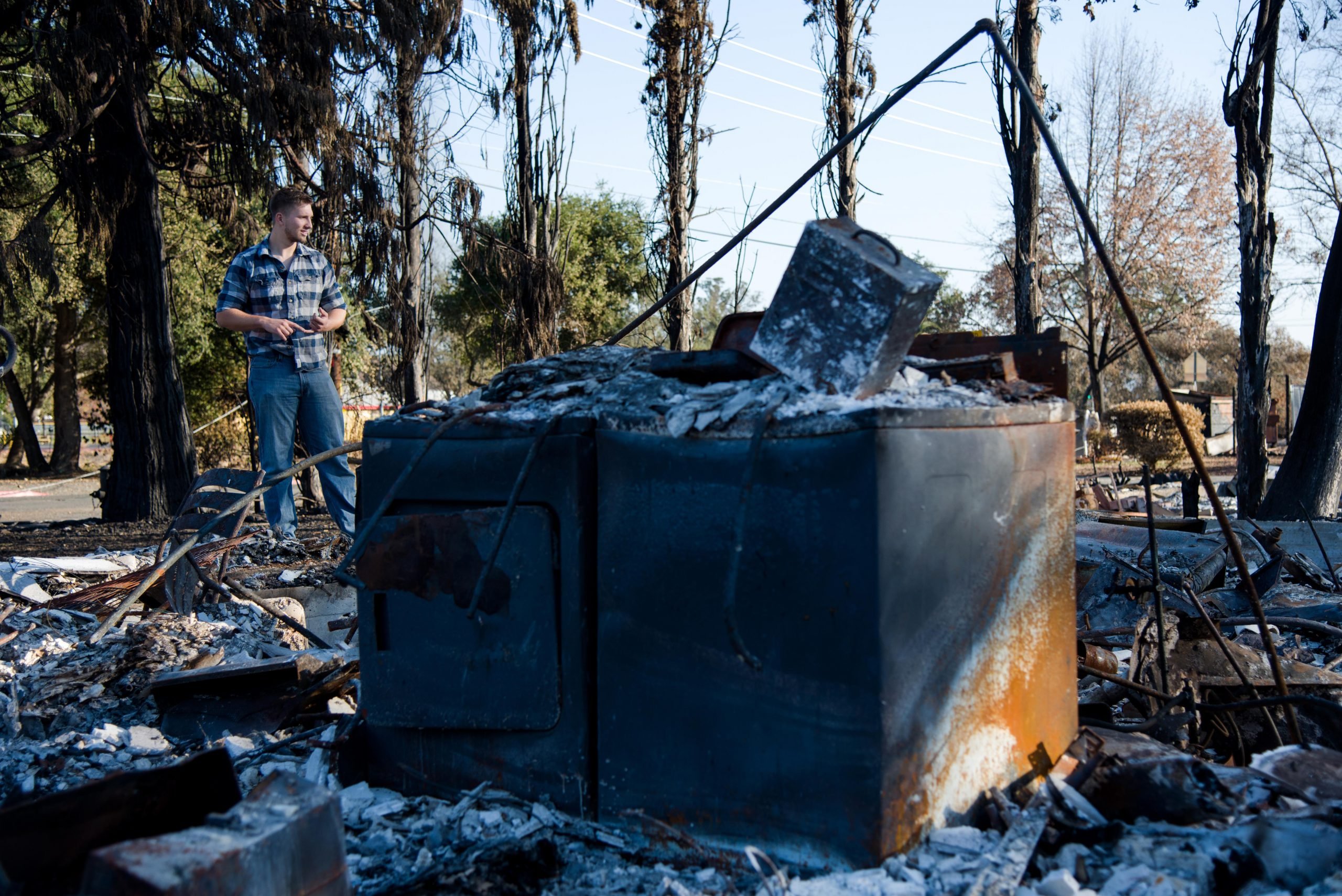- by tgreenan
-
May 26, 2020
Wildfire season has expanded substantially over the last few decades: 2017 was the most destructive fire season in California history at the time, until being surpassed in 2018 after the Camp Fire caused 85 deaths, destroyed nearly 19,000 structures, and burned over 150,000 acres.
Of the top 20 most destructive wildfires in California history, ten took place in the last five years. And, according to the Forest Service, wildfire season across the United States has stretched from four months per year to between six and eight months on average, prompting Forest Service crews to begin preparing for wildfires year-round.
While COVID-19 has taken priority in our news outlets, now is the time to take action and consider your own emergency response. These three tips will help you prepare your home for wildfire season.
For more information and resources, visit readyforwildfire.org.
1. Create defensible space around your home
Defensible space is a buffer created around your home by clearing out dry vegetation like weeds or leaves, which can easily endanger your property by catching or spreading fire. Cal Fire recommends creating two zones of defensible space.
The first, extending 30 feet from your home in all directions, should be kept free from dead leaves, branches, and other dry vegetation. Tree branches should be kept a minimum of ten feet from other trees, and you should keep plants away from windows or flammable materials like furniture.
The second, extending 100 feet in all directions, should be cleared of most potential fuels, although dead vegetation up to three inches in depth and grass mowed to a height of four inches maximum are allowed.
Creating defensible space is also important for protecting firefighters, as it creates safer, more accessible areas from which to defend your home during a wildfire. Clearing potential fuels around your home also decreases the risk of a fire spreading from one structure to another, giving firefighters time to prevent major incidents before they begin.
2. Harden your home for increased fire resistance
Hardening or retrofitting your home involves altering the materials of the physical structure to include more fire-resistant features or eliminate potential hazards.
Retrofits could be as time and labor intensive as re-roofing to make sure that you’re using more fire-resistant materials like metal or tile, or as simple as putting a metal mesh over the open vents of your home to make sure that embers don’t come flying in during a fire.
This list of ten low-cost retrofits by Cal Fire includes several other changes you can make, such as installing dual-paned windows with a lower risk of breaking or keeping rain gutters clear of plant debris.
Although many hardening measures can be difficult or time intensive, they can substantially reduce the risks of living in wooded areas more vulnerable to large wildfires. This CBS article provides one example of a more comprehensive home hardening plan developed in conjunction with Cal Fire.
3. Prepare your evacuation plan and emergency kit
While defensible space and home hardening can decrease the risk of a fire affecting your home, neither practice is entirely fireproof. Therefore, it’s essential that you have an emergency evacuation plan, as well as an emergency kit ready to go in your car in case of a disaster.
Evacuation plans are pre-developed guides or checklists to help you efficiently take action during an emergency. Cal Fire has a home evacuation checklist for anticipated evacuations, with tips like removing flammable materials from windows, leaving your lights on to make it easier for firefighters to find you, checking on neighbors, and preparing animals for transportation.
You should also make sure your emergency kit is assembled and fully stocked while preparing for an incident. The emergency supply kit checklist from Cal Fire includes essentials like a three-day supply of food and water, copies of important documents like social security cards or birth certificates, and a first aid kit.
It’s also a good idea to maintain a home inventory of all of your belongings. Many insurance agencies will ask for a detailed list of destroyed property when filing a claim, which is used to determine the value of your losses. Keeping a video or photos of the items in your home can help make this difficult process easier and quicker.
Current predictions indicate a high likelihood of major fires this wildfire season, and these conditions don’t seem likely to change anytime soon. It is essential, now more than ever, that people take fire preparedness for their homes into their own hands.
By Trevor Greenan. Questions? Get in touch at tgreenan@perimeterplatform.com.
Recent Posts
Archives
- April 2024 (2)
- March 2024 (2)
- January 2024 (2)
- December 2023 (1)
- August 2023 (6)
- July 2023 (4)
- June 2023 (1)
- May 2023 (1)
- August 2021 (1)
- July 2021 (1)
- June 2021 (1)
- April 2021 (2)
- March 2021 (1)
- January 2021 (2)
- November 2020 (2)
- October 2020 (3)
- September 2020 (1)
- August 2020 (1)
- July 2020 (1)
- June 2020 (4)









